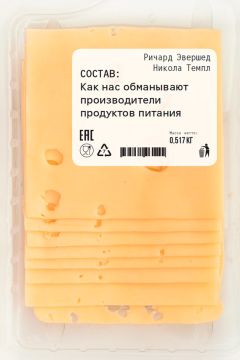46
Salque, M., Bogucki, P. I., Pyzel, J., Sobkowiak-Tabaka, I., Grygiel, R., Szmyt, M. & Evershed, R. P. 2013. Earliest evidence for cheese making in the sixth millennium BC in northern Europe. Nature 493: 522–25.
Sansoucy, R. Livestock – a driving force for food security and sustainable development. FAO Corporate Document Repository; http://www.fao.org/docrep/v8180t/v8180t07.htm.
Ulberth, F. 2003. Milk and dairy products. In: Food Authenticity and Traceability (ed. Michele Lees). Chapter 16. Woodhead Publishing Ltd & CRC Press LCC, Cambridge and Boca Raton, Florida.
Mottram, H. R., Woodbury, S. E. & Evershed, R. P. 1997. Identification of triacylglycerol positional isomers present in vegetable oils by high performance liquid chromatography/atmospheric pressure chemical ionization mass spectrometry. Rapid Communications in Mass Spectrometry 11: 1240–52.
Mottram, H. R. & Evershed, R. P. 2001. Elucidation of the composition of bovine milk fat triacylglycerols using high-performance liquid chromatography – atmospheric pressure chemical ionisation mass spectrometry. Journal of Chromatography A 926: 239–53.
Mottram, H. R., Crossman, Z. M. & Evershed, R. P. 2001. Regiospecific characterisation of the triacylglycerols in animal fats using high performance liquid chromatography-atmospheric pressure chemical ionisation mass spectrometry. Analyst 126: 1018–24.
Bradley, H. W. Improvement in compounds for culinary use. US patent No. 110,626. January 3, 1871; http://www.google.com/patents/US110626.
Raney, M. Method of producing finely-divided nickel. US patent No. 1,628,190. 10 May 1927; http://www.google.co.uk/patents/US1628190.
Mozaffarian, D., Katan, M. B., Ascherio, A., Stampfer, M. J. & Willett, W. C. 2006. Trans fatty acids and cardiovascular disease. The New England Journal of Medicine 345: 1601–13.
Derewiaka, D., Sosińska, E., Obiedziński, M., Krogulec, A. & Czaplicki, S. 2011. Determination of the adulteration of butter. Journal of Lipid Research and Metabolism 113: 1005–11.
http://www.qsrmagazine.com/news/there-cheese-fraud-epidemic.
http://www.bloomberg.com/news/articles/2014-08-26/swiss-combat-counterfeit-cheese-with-dna-fingerprinting.
Branigan, T. (2 Dec 2008). Chinese figures show fivefold rise in babies sick from contaminated milk. The Guardian: http://www.guardian.co.uk/world/2008/dec/02/china.
Tyan, Y.-C., Yang, M.-H., Jong, S.-B., Wang, C.-K. & Shiea, J. 2009. Melamine contamination. Analytical and Bioanalytical Chemistry 395: 729–35.
http://news.bbc.co.uk/1/hi/7720404.stm.
http://www.cfs.gov.hk/english/multimedia/multimedia_pub/multimedia_pub_fsf_56_03.html.
Curl, C. L. & Fenwick, G. R. 1983. On the determination of papaya seed adulteration of black pepper. Food Chemistry 12: 241–47.
Naseema, B. S., Ambily, P., Thomas, G., Biju, M. T., Pratheesh, K. N., George, X., Pradeep, K. G. T., Rajith, R., Prathibha, R. K. & Visal, K. S. 2014. Pesticide residues in soils under cardamom cultivation in Kerala, India. Pesticide Research Journal 26(1): 35–41.
Priyadarshini, S. 2014. Himalayas losing prized spice to climate change, poor science. Nature India: 10.1038/nindia.2014.162.
Jefferson's visit to Bordeaux is given in the history of Château Lafite: http://www.lafite.com/en/chateau-lafite-rothschild/history.
Liu, L., Cozzolino, D., Cynkar, W. U., Gishen, M. & Colby, C. B. 2006. Geographic classification of Spanish and Australian tempranillo red wines by visible and near-infrared spectroscopy combined with multivariate analysis. Journal of Agricultural and Food Chemistry 54(18): 6754–59.
Cozzolino, D., Smyth, H. E. & Gishen, M. 2003. Feasibility study on the use of visible and near-infrared spectroscopy together with chemometrics to discriminate between commercial white wines of different varietal origins. Journal of Agricultural and Food Chemistry 51(26): 7703–08.
Doner, L. W., Ajie, H. O., Sternberg, L. da S. L., Milburn, J. M., DeNiro, M. J. & Hicks, K. B. 1987. Detecting sugar beet syrups in orange juice by D/H and 18O/16O analysis of sucrose. Journal of Agricultural and Food Chemistry 35: 610–12.
Le Gall, G., Puaud, M. & Colquhoun, I. J. 2001. Discrimination between orange juice and pulp wash by 1H nuclear magnetic resonance spectroscopy: identification of marker compounds. Journal of Agricultural and Food Chemistry 49(2): 580–88.
Wu, M.-T., Wu, C.-F., Wu, J.-R., Chen, B.-H., Chen, E. K., Chao, M.-C., Liu, C.-K. & Ho, C.-K. 2012. The public health threat of phthalate-tainted foodstuffs in Taiwan: The policies the government implemented and the lessons we learned. Environmental International 44: 75–79.
Zhang, Z., Kong, F., Vardhanabhuti, B., Mustapha, A. & Lin, M. 2012. Detection of engineered silver nanoparticle contamination in pears. Journal of Agricultural and Food Chemistry 60(43): 10762–67.
Spink, J. & Moyer, D. C. 2011. Backgrounder: Defining the Public HealthThreat of Food Fraud. Anti-Counterfeiting and Product Protection Program, Michigan State University.
Furia, E., Naccarato, A., Sindona, G., Stabile, G. & Tagarelli, A. 2011. Multielement fingerprinting as a tool in origin authentication of PGI food products: Tropea red onion. Journal of Agricultural and Food Chemistry 59: 8450–57.
European Food Safety Authority. 2014. The 2012 European Union Report on pesticide residues in food. EFSA Journal, 12(12): 3942.
Vallverdú-Queralt, A., Medina-Remón, A., Casals-Ribes, I., Amat, M. & Lamuela-Raventós, R. M. 2011. A metabolomic approach differentiates between conventional and organic ketchups. Journal of Agricultural and Food Chemistry 59: 11703–10.
Bateman, A. S., Kelly, S. D. & Woolfe, M. 2007. Nitrogen isotope composition of organically and conventionally grown crops. Journal of Agricultural and Food Chemistry 55: 2664–70.
Hohmann, M., Christoph, N., Wachter, H. & Holzgrabe, U. 2014. 1H NMR profiling as an approach to differentiate conventionally and organically grown tomatoes. Journal of Agricultural and Food Chemistry 62: 8530–40.
On Smell – короткое эссе Льюиса Томаса, опубл. в кн.: The Bedford Reader. 1985. St. Martin's Press, New York.
Laska, M., Seibt, A. & Weber, A. 2000. 'Microsmatic' primates revisited: olfactory sensitivity in the squirrel monkey. Chemical Senses 25: 47–53.
Shepherd, G. M. 2004. The human sense of smell: are we better than we think? PLoS Biology 2(5): e146.
Deibler, K. D. & Delwiche, J. (eds) 2004. Handbook of Flavor Characterization: Sensory Analysis, Chemistry, and Physiology. Marcel Dekker, Inc., Monticello, New York, p. 187.
Olsson, M. J., Lundström, J. N., Kimball, B. A., Gordon, A. R., Karshikoff, B., Hosseini, N., Sorjonen, K., Höglund, C. O., Solares, C., Soop, A., Axelsson, J. & Lekander, M. 2014. The scent of disease: human body odor contains an early chemosensory cue of sickness. Psychological Science: 0956797613515681.




